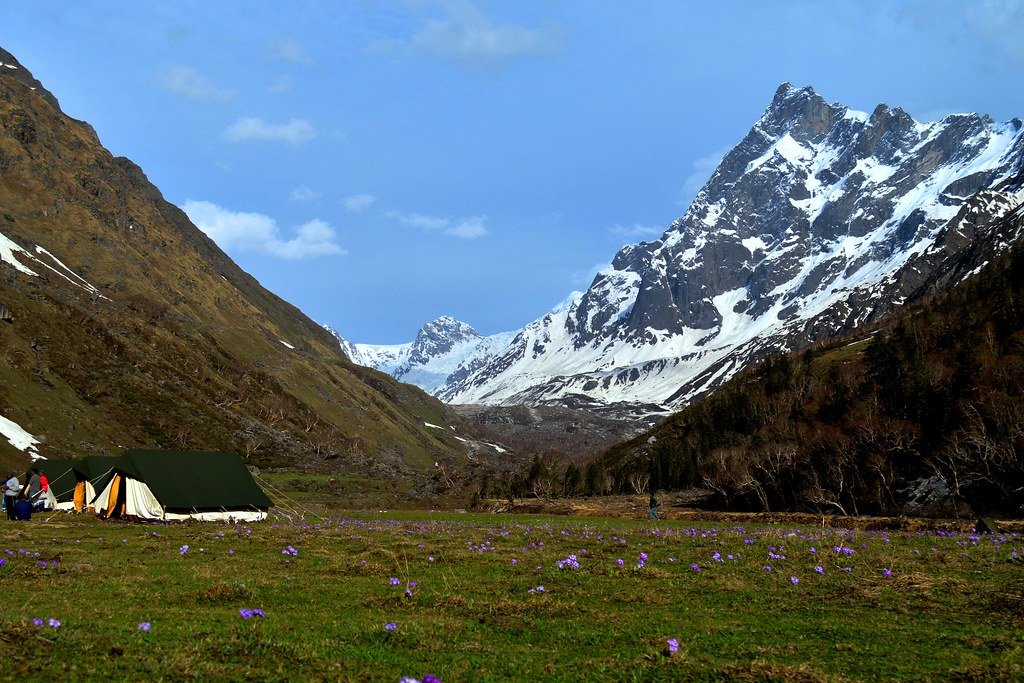24 Places To Visit In Mandi | Complete Tour Guide | How To Reach
Mandi, often referred to as ‘Choti Kashi’, is a vibrant city in Himachal Pradesh, India, renowned for its rich cultural heritage and numerous exquisite temples. Nestled in the north-west Himalayas, it serves as the administrative center of the Mandi District. Established in 1527, the city boasts historical significance and serves as a bustling hub of trade and cultural activities. Mandi is also the gateway to the picturesque Prashar Lake trek and is home to the esteemed Indian Institute of Technology (IIT) Mandi. With its pleasant climate and strategic location, Mandi seamlessly blends tradition with modernity, offering a distinctive experience for travelers.

Best Places To Visit In Mandi:
\Mandi showcasing royal artifacts, and ancient temples like Panchvaktra Temple. Nature lovers can explore Prashar Lake and Rewalsar Lake. Adventure activities like trekking and river rafting are popular, and the town is a gateway to the Great Himalayan National Park. Mandi offers a mix of culture, nature, and adventure for a memorable experience.
Here are some places to visit in Mandi:
1. Prashar Lake
Prashar Lake is a beautiful and sacred lake located in the Mandi distric. It is situated at an elevation of 2,730 metres (8,960 ft) and has a three-storied pagoda-like temple dedicated to the sage Prashar on its bank. The lake also contains a floating island that moves in different directions. Prashar lake is a most trekable destination for sightseeing, camping, trekking. Prashar Lake, steeped in history and mythology, offers a serene retreat for nature lovers and spiritual seekers alike. To reach this picturesque lake, you can either take a road trip from Mandi or Kullu, or embark on a moderate 7 km trek from Baggi village. The best times to visit are from April to July and September to November, when the weather is pleasant and the views are clear.
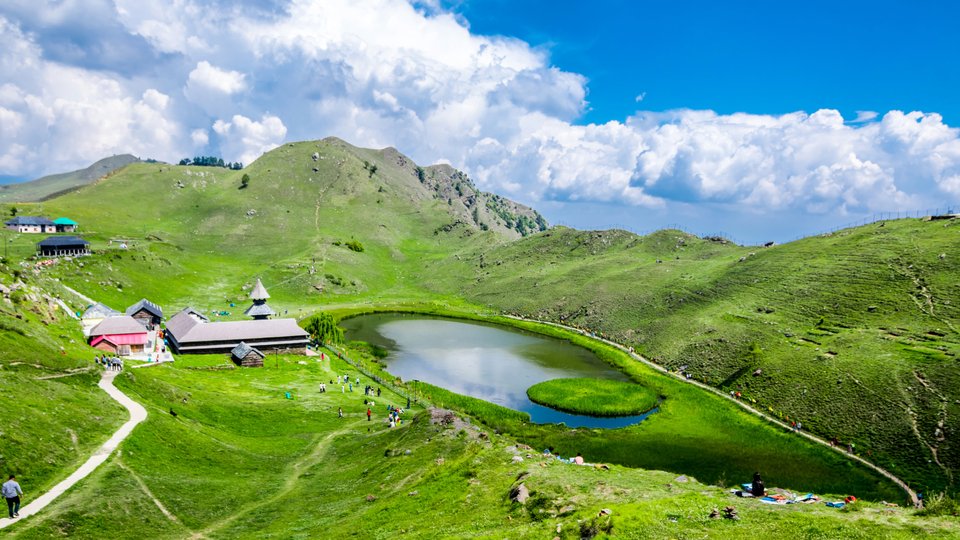
Legend has it that the sage Prashar meditated at this very spot, and the lake itself was formed by Bhima, one of the Pandava brothers, who struck the mountain with his elbow. The 14th-century temple, constructed by Raja Ban Sen of Mandi, stands in honor of the sage. Visitors to Prashar Lake can immerse themselves in the tranquility of the deep blue waters, the lush greenery of the surrounding meadows, and the awe-inspiring backdrop of snow-capped peaks. The ancient temple architecture adds a sense of mystique to the setting. Additionally, one can experience the vibrant local culture and partake in the festivities of nearby villages.
2. Rewalsar Lake
Rewalsar Lake, also known as Tso Pema, is a stunning lake nestled in the Mandi district. Located approximately 22.5 km southwest of Mandi town, it sits at an elevation of around 1,360 meters above sea level. This sacred lake holds immense significance for Hindus, Sikhs, and Buddhists, with legends linking it to Lord Krishna, Guru Gobind Singh, and Padmasambhava. One of its unique features is the floating islands of reed, believed to move with the power of prayer or the gentle breeze. Surrounding the lake are numerous temples, monasteries, and shrines that exemplify the religious diversity and harmony of the region. Rewalsar Lake draws in tourists, especially during the festivals of Sisu and Baisakhi, who come to witness its spiritual aura and natural beauty. For nature enthusiasts, the lake offers a tranquil and picturesque view of the water, woodlands, and hills, making it a perfect retreat.
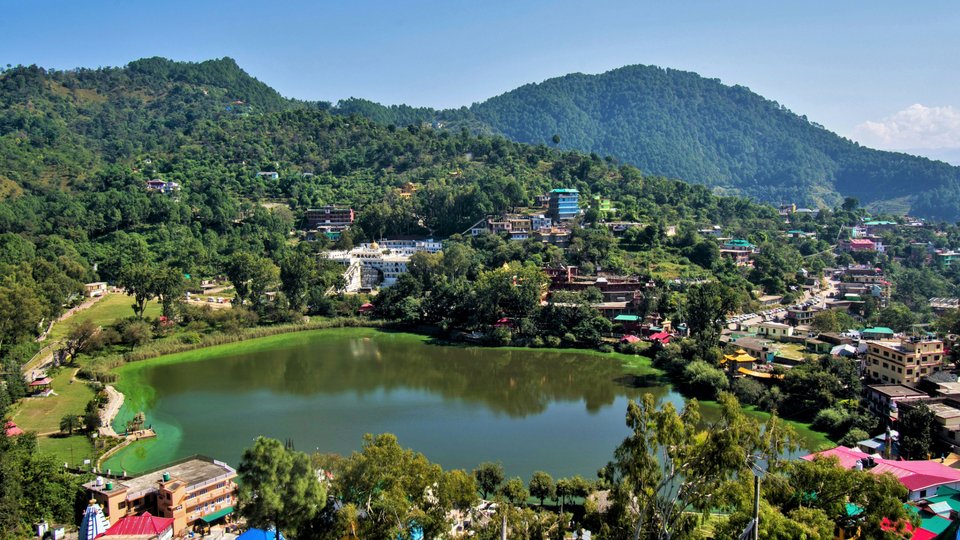
3. Barot Valley
Barot Valley, a charming village in Mandi district, is a tranquil retreat offering an array of activities such as trekking, camping, and trout fishing. The village is renowned for the Shanan Hydel Project, one of India’s oldest hydroelectric projects. Serving as the gateway to the Nargu Wildlife Sanctuary, Barot Valley boasts a rich biodiversity with wildlife including black bear, goral, and monal. If you seek a peaceful and nature-filled getaway, Barot Valley promises a delightful escape. Barot Valley is most enchanting to visit from April to June and September to November, when the weather is delightful and the valley is adorned in lush greenery.😊
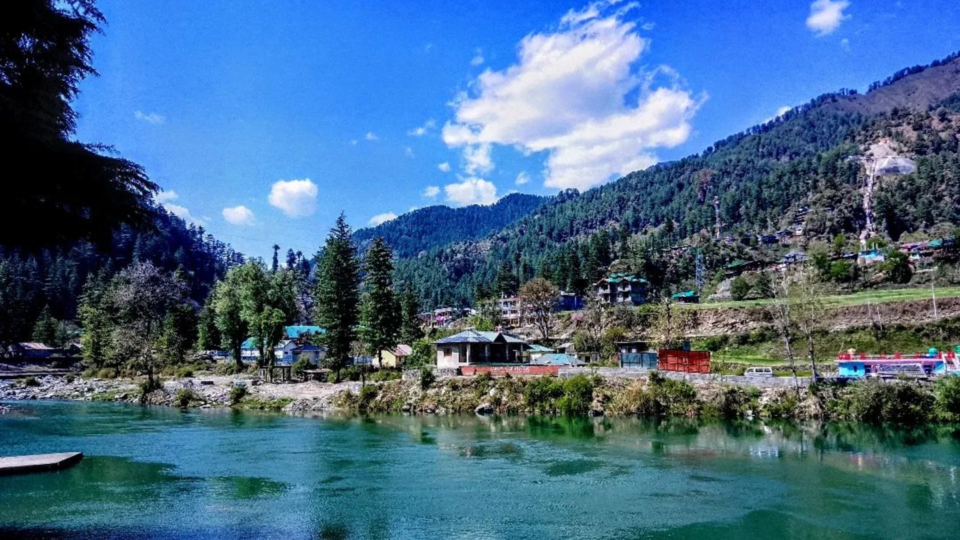
4. Janjehli
Janjehli, a picturesque village nestled in the Siraj valley of Mandi district, offers a scenic retreat. Located approximately 90 km from Mandi town and 150 km from Shimla, the state capital, Janjehli is surrounded by pine forests and mountains, making it a haven for adventure enthusiasts. Visitors can indulge in activities like night safaris, hiking, trekking, and mountaineering. The village is renowned for its scenic beauty, rich culture, and ancient temples, including the Shikari Devi temple, perched at an altitude of 3300 meters above sea level. Janjehli promises an opportunity to experience the unexplored wonders of the Himalayas.
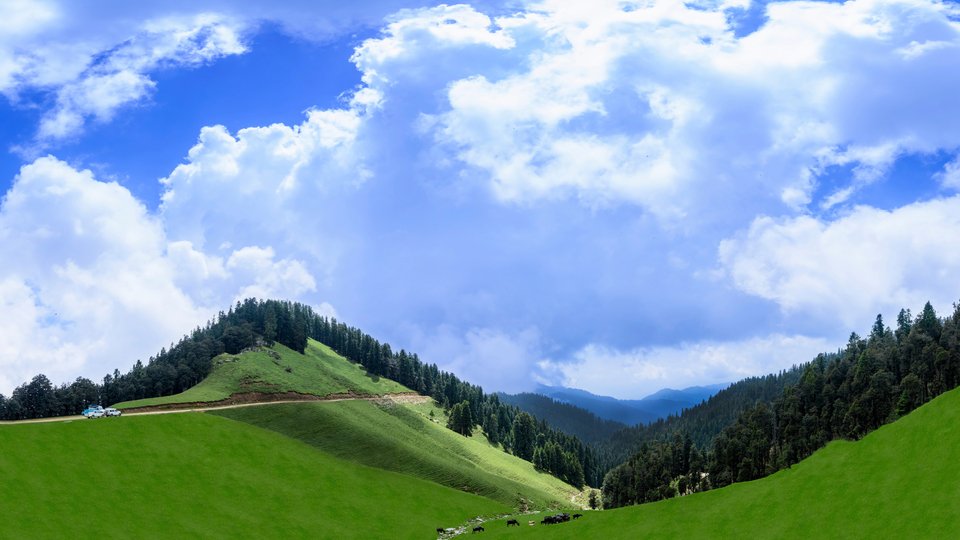
5. Bhootnath Temple
The Bhootnath Temple, a renowned shrine dedicated to Lord Shiva, is situated in the heart of Mandi town. It was constructed in 1527 AD by Raja Ajber Sen, coinciding with the shift of the state capital from Bhiuli to Mandi. This temple is esteemed for its impressive Shikhara-style architecture and features an idol of Nandi, the sacred bull, positioned facing the entrance. Hosting the grand Shivaratri festival annually, the temple attracts thousands of devotees and numerous local deities.

Visit Time: 5 AM to 9:45 PM
6. Shikari Devi Temple
The Shikari Devi Temple, dedicated to the Goddess of hunters, Shikari Devi, sits atop a hill in Mandi district. A unique feature of this temple is its lack of a roof, yet during winter, when the region is blanketed in snow, no snow is found inside. According to legend, the Pandavas established the temple during the time of the Mahabharata, a fact also noted in the Markandeya Purana. Offering stunning views of snow-clad ranges and verdant pastures, the temple is a favorite spot for trekkers and nature enthusiasts. Accessible either by road from Karsog (21 km) or Janjehli (16 km), or by hiking, the temple stands at an altitude of 3359 meters, making it the highest peak in the Mandi district.
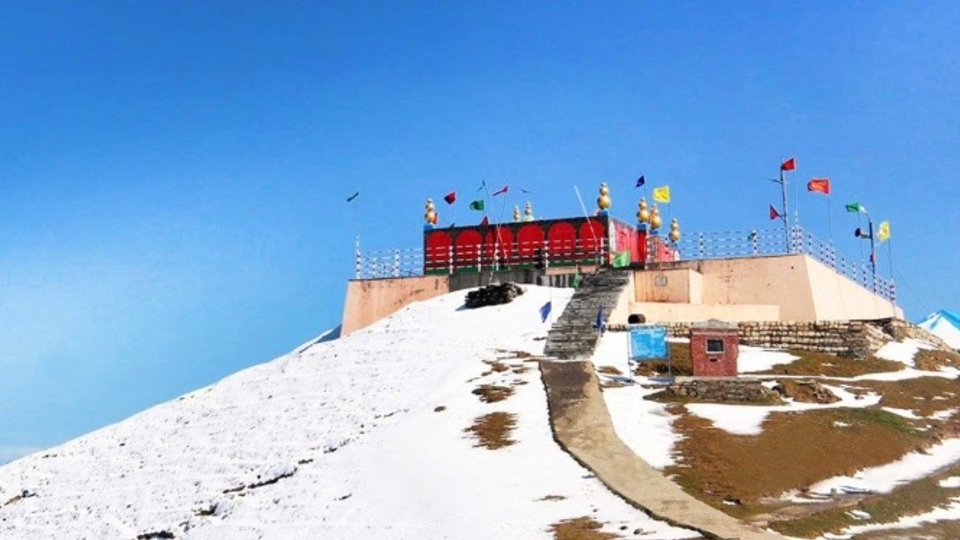
Visit time: 6 AM to 5 PM
7. Tarna Temple
Tarna Temple, also known as Shyama Kali Temple, is a revered shrine dedicated to Goddess Shyama Kali, an incarnation of Goddess Parvati, located in the Mandi district. Nestled amidst a dense forest, the temple stands at an altitude of 300 feet above sea level, offering a breathtaking panorama of the snow-capped mountains and the city of Mandi. Constructed by King Shyam Sen in the 17th century, the temple is adorned with beautiful paintings depicting various gods, goddesses, and gurus. Accessible via a climb of 305 stairs from the main bazaar, the temple is a popular pilgrimage and tourist spot in Mandi.
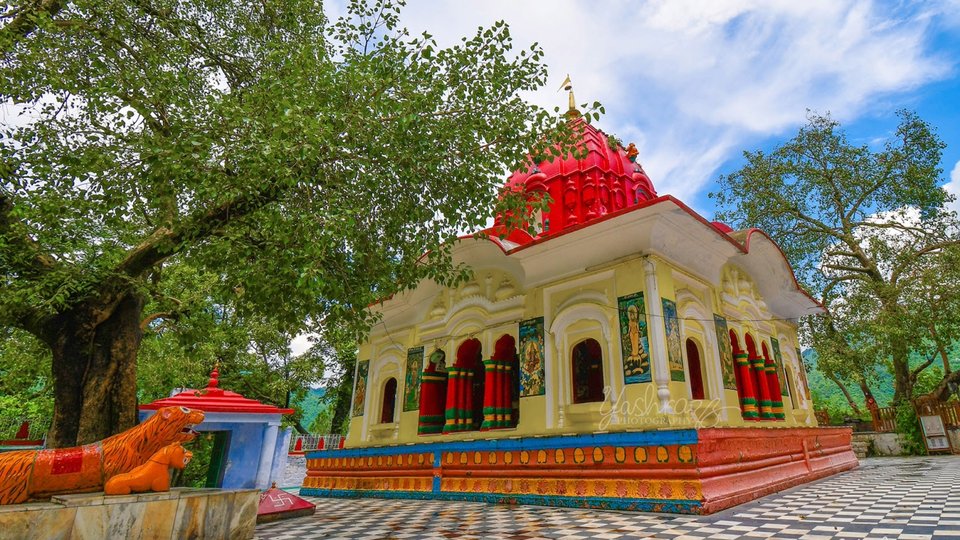
Visit Time: 6 AM to 8 PM
8. Barot Dam
Barot Dam, a hydroelectric project on the Uhl River in Mandi district, is situated near the scenic Barot Valley, renowned for its beauty and adventure opportunities. Constructed in 1932, the dam boasts a capacity of 4.5 MW and also functions as a habitat for diverse fish species and birds. The best time to visit Barot Dam depends on your preferences and activities. Here’s a summary based on the seasons:
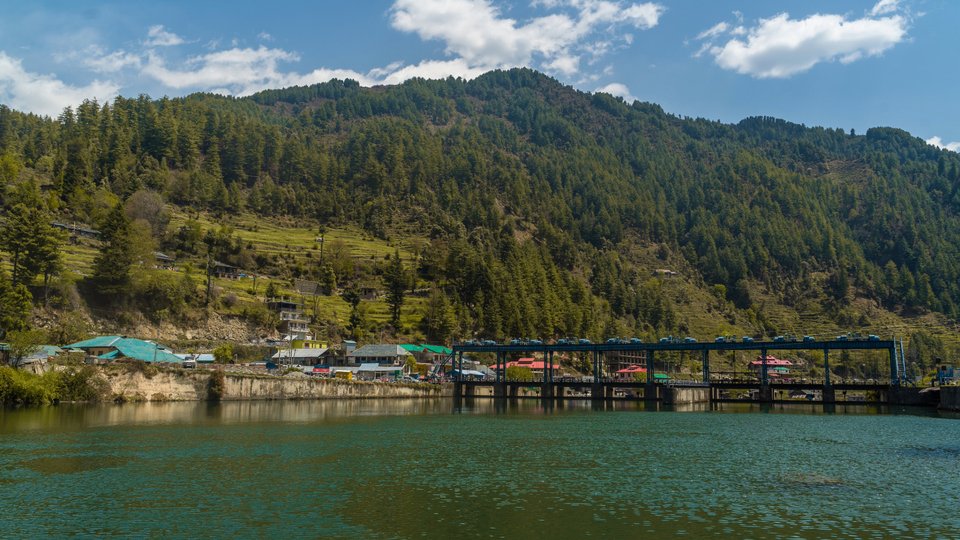
- Spring (March to May): Ideal for trekking, hiking, and photography, with mild weather and green landscapes (10°C to 25°C).
- Summer (June to August): Good for fishing and paragliding, with warm weather and abundant trout in the river (15°C to 28°C).
- Monsoon (September to November): Scenic with enhanced greenery and higher water levels in the dam due to rain (12°C to 22°C).
- Autumn (December to February): Cold and snowy, offering a winter wonderland experience ( -5°C to 10°C).
9. Bada Dev – KamruNag Temple
Bada Dev KamruNag Temple, located in Mandi, is a revered site dedicated to Kamrunag, the Lord of Rain and the primary deity of the Saraj region. Situated near a lake believed to have been created by Kamrunag himself, the temple and its surroundings offer a tranquil retreat for devotees and trekkers alike. The lake, a popular trekking destination, provides stunning views of the Dhauladhar range and the Balh valley. Annually, on June 14th, a fair is held at the temple where devotees offer gold, silver, coins, and other valuables into the lake. Accessible via a hiking trail from Rohanda, approximately 40 km from Mandi, the temple and lake offer a peaceful and sacred atmosphere, allowing visitors to experience the divine presence of Kamrunag. The trail, while well-paved, can be slippery during the rainy season.
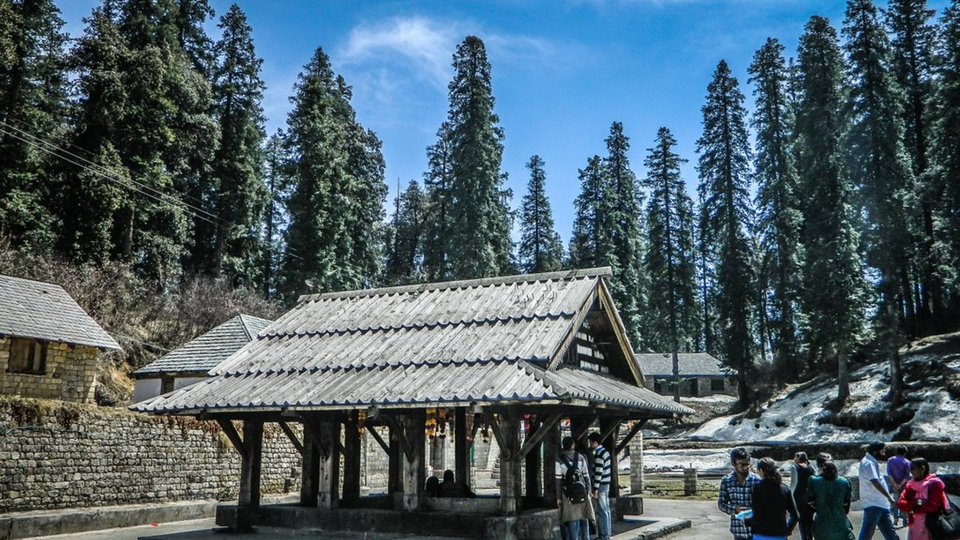
10. Pangna-Karsog Valley
Pangna-Karsog Valley in Mandi, is a picturesque valley known for its stunning natural beauty and tranquil surroundings. The Valley is renowned for its apple cultivation, with the landscape adorned by apple trees and other fruits and vegetables. The valley is dotted with lush greenery, orchards, and terraced fields, making it a perfect destination for nature lovers and photographers. It is also home to several ancient temples and shrines, adding to its cultural significance. The valley offers a peaceful retreat away from the hustle and bustle of city life, making it an ideal place for a relaxing holiday.
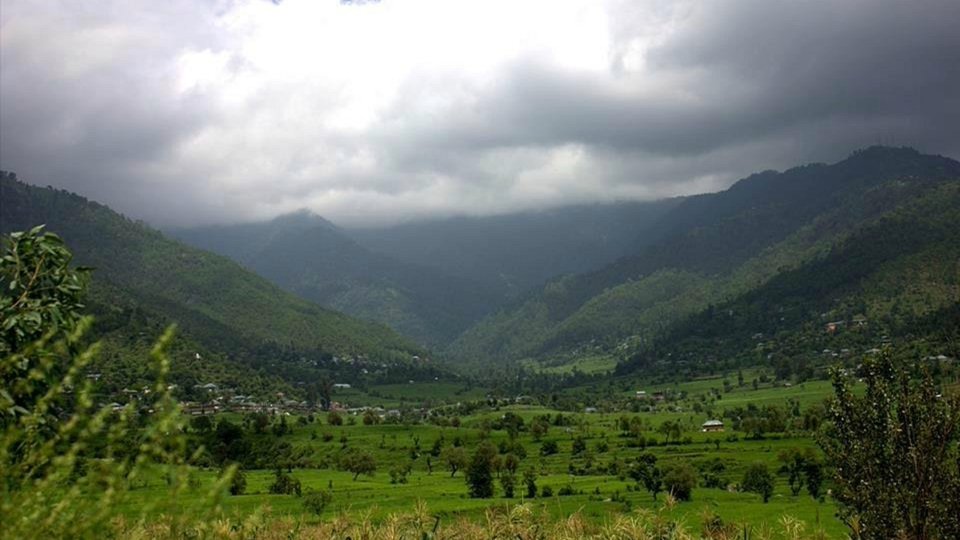
11. Panchvaktra Temple
The Panchvaktra Temple is a revered Hindu temple dedicated to Lord Shiva, featuring his depiction with five faces. Situated at the confluence of the Beas and Suketi rivers in Mandi, Himachal Pradesh, it is among the region’s oldest and most frequented temples, designated as a protected monument by the Archaeological Survey of India. This temple showcases the Shikhara style of architecture, boasting a large platform and four intricately carved pillars. The Maha Shivratri festival, celebrating the divine union of Lord Shiva and Goddess Parvati, attracts numerous pilgrims to the temple. Serving as a symbol of Mandi’s rich cultural and religious heritage,
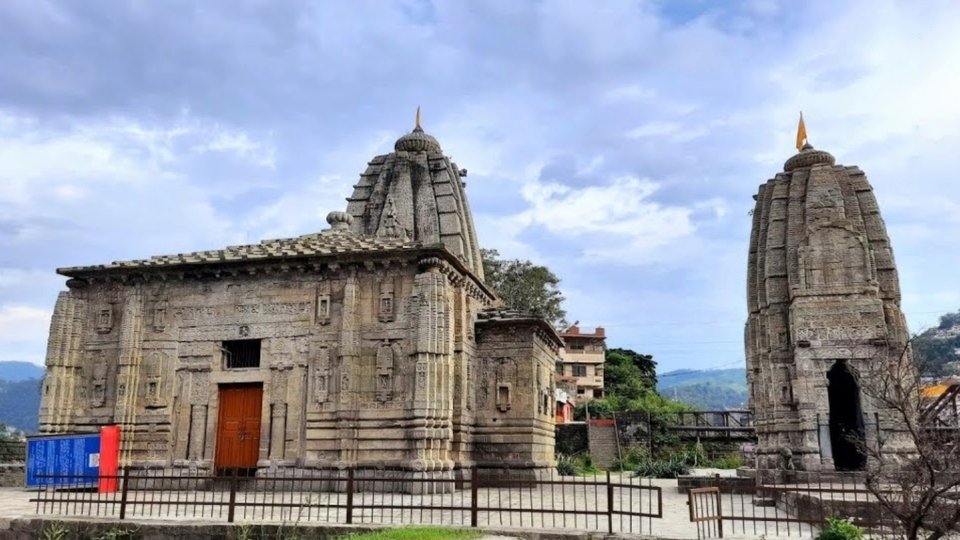
Visit Time: 6 AM to 6 PM
12. Bir Monastery
The Bir Monastery, situated in the village of Bir in Mandi district, is a Tibetan Buddhist monastery established by Tibetan refugees. It is renowned for its gilded Buddha statues, thangka paintings, and prayer ceremonies. The monastery’s proximity to the paragliding site of Billing makes it a popular destination for adventure enthusiasts.
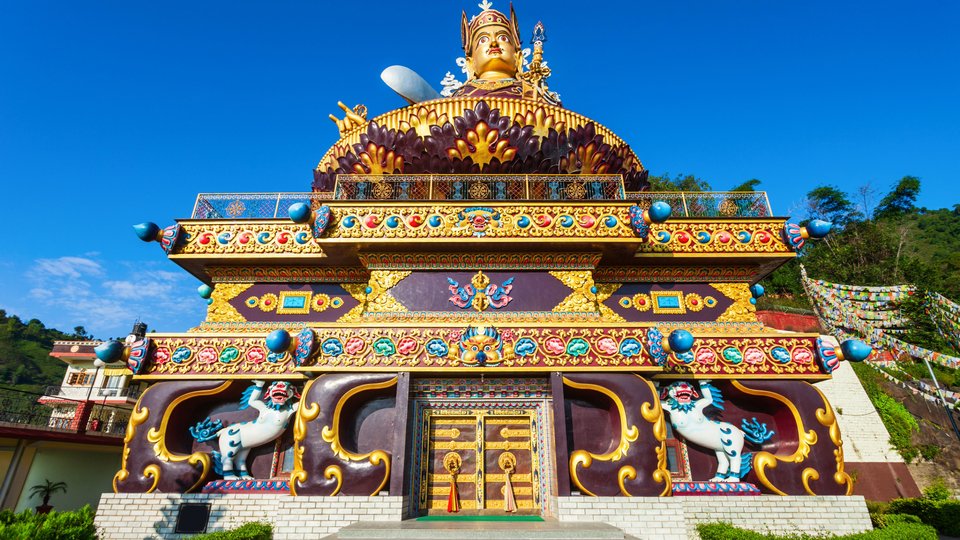
Visit time: 9:00 am to 12:00 noon and 1:00 pm to 7:00 pm
13. Bhima Kaali Temple
The Bhima Kaali Temple in Mandi, is a renowned shrine dedicated to Goddess Bhima Kali, a form of Goddess Durga. Situated on the banks of the river Beas, the temple features a museum exhibiting various statues and idols of Hindu deities. Built by Raja Sudhar Sen in the 17th century and later renovated by his successors, the temple is believed to be the site where Lord Krishna battled the demon Banasura, burying his head at the temple’s entrance. The temple’s architectural style blends Hindu and Buddhist elements, making it a unique pilgrimage site. Festivals such as Kali Puja and Udyapan Jag are celebrated with great fervor at this temple.
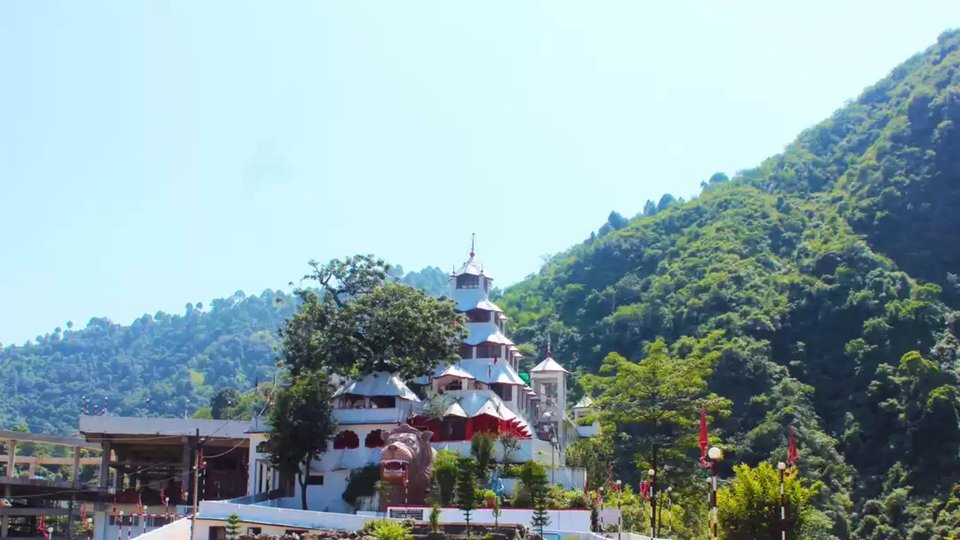
Visit Time: 6:00 AM to 8:00 PM
14. Mahunag Temple
Mahunag Temple, a revered shrine dedicated to Lord Mahunag, believed to be an incarnation of Lord Karna from the Mahabharata, is located in Mahu village of Karsog subdivision in Mandi district, Surrounded by picturesque views and apple orchards, the temple was constructed in the 17th century by Raja Shyam Sen, an ardent devotee of Lord Karna. The temple draws numerous pilgrims and tourists, particularly on Sundays and during the annual fair in July.
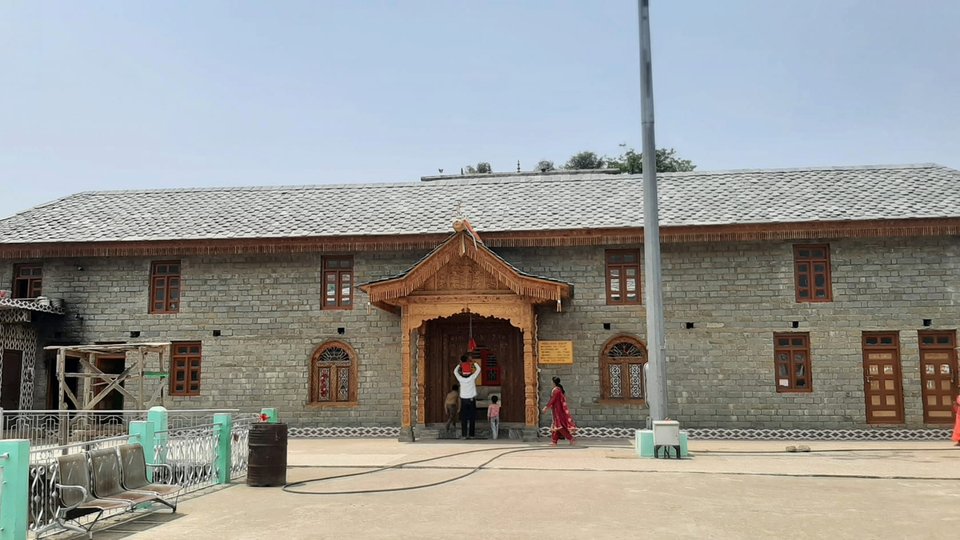
Visit time: 5:00 AM to 8:00 PM
15. Triloknath Temple
Triloknath Temple, a historic shrine in Mandi, is dedicated to Lord Shiva. Constructed in the 16th century by Sultan Devi, the queen of Raja Ajber Sen, the temple features a three-faced image of Shiva and Parvati, along with sculptures of other Hindu deities. Situated on the banks of the Beas River near the old Victoria Bridge, the temple is a favored spot for tourists and pilgrims, particularly during festivals.
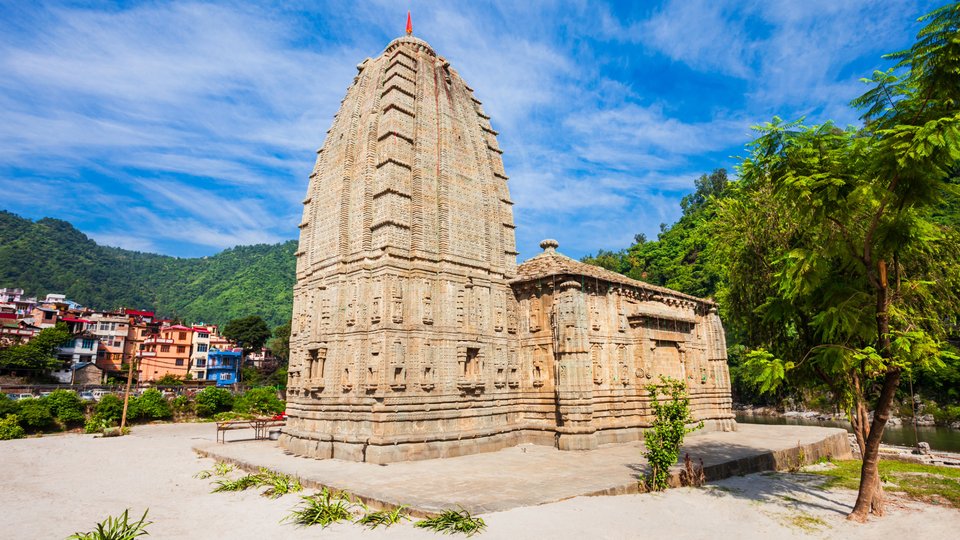
Visit Time: 6 AM to 7 PM
16. Kamaksha Devi Temple
The Kamaksha Devi Temple, located in the village of Jai Devi near Mandi, is a Hindu temple dedicated to Goddess Durga in her form of Kamaksha or Kamakhya. This temple holds significance as one of the 51 Shaktipeeths, where the body parts of Goddess Sati fell after her self-immolation. Legend has it that this temple marks the battleground where Goddess Durga fought the demon Mahishasura. Known for its wooden architecture and scenic view of the Shivalik hills, the temple also hosts various festivals and rituals, including buffalo sacrifice, during Navratri and Durga Puja.
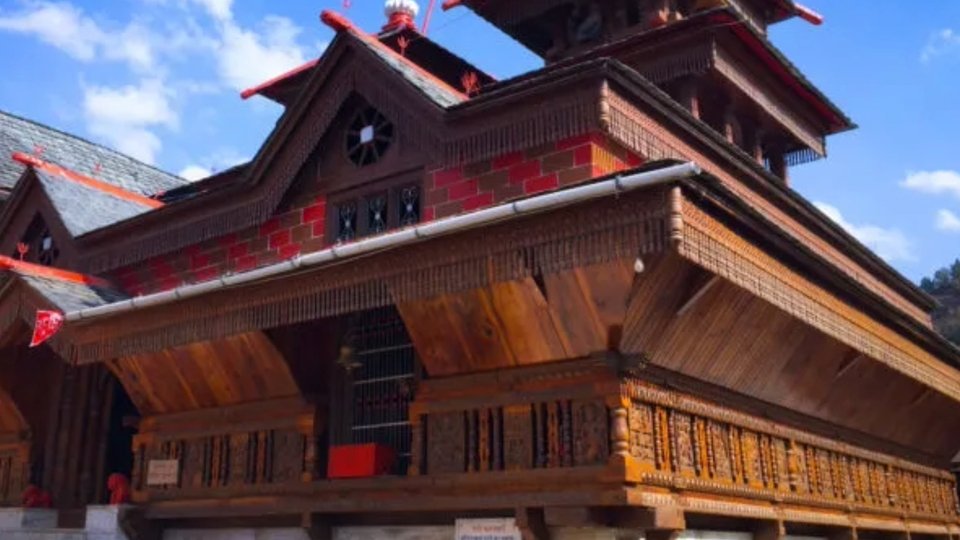
Visit Time: 6:00 AM to 6:00 PM
17. Nargu Wildlife Sanctuary
Nargu Wildlife Sanctuary, situated on the eastern bank of the Uhl River in Mandi District, spans an area of 132.37 km. This sanctuary is home to diverse wildlife, including the monal, Himalayan black bear, musk deer, serow, barking deer, ghoral, and various pheasants. Its picturesque alpine forests and river views make it a popular tourist spot. The village of Barog, linked to Kullu by trekking routes, serves as a primary entry point to the sanctuary. The best times to visit are April to May and August to October.
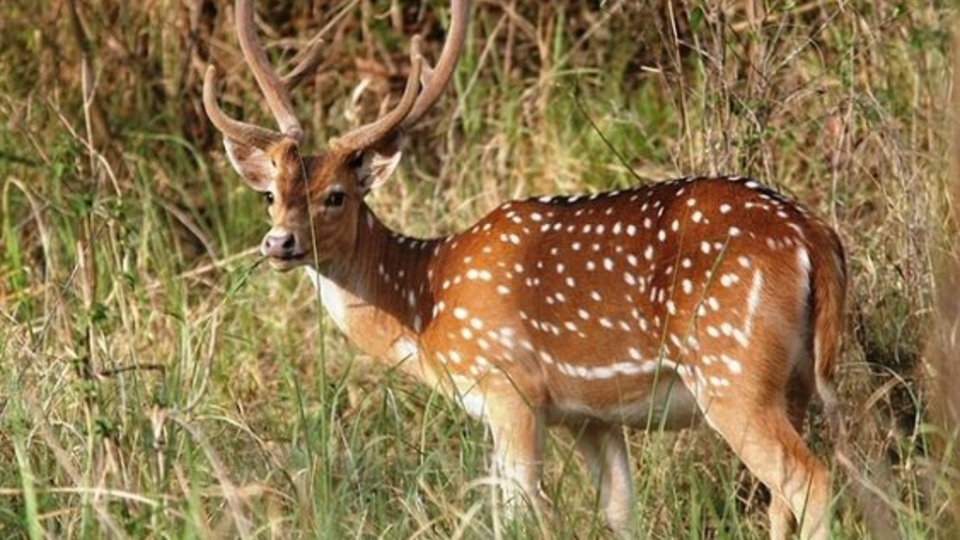
18. Gurdwara Guru Gobind Singh Ji
Gurdwara Guru Gobind Singh Ji is a significant Sikh shrine situated in Mandi, It commemorates Guru Gobind Singh’s visit to the area in 1701, during which he stayed for six months and 19 days, holding his court on a large rock in the river Beas. The gurdwara houses sacred relics of the Guru, including his bed, rifle, and musical instrument, and features a beautiful sarovar (pool) as well. A popular pilgrimage site for Sikhs,
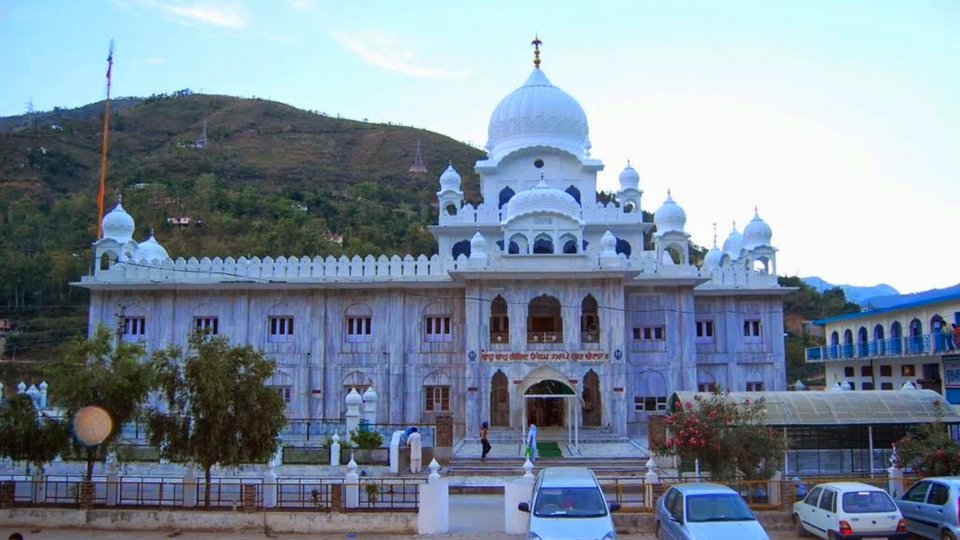
Visit Time: 6:00 am to 8:00 pm
19. Balh Valley
Balh Valley in Mandi, encompasses a vibrant market known as Balh Valley Mandi or Sunder Nagar Valley. This valley is renowned for its fertile land, cultivating crops like maize, wheat, ginger, and sugarcane. Balh Valley Mandi serves as a hub where farmers can sell their produce and purchase other goods. Additionally, it attracts tourists with its picturesque views of the valley and the Suketi stream meandering through it. Located approximately 20 km from Mandi town and 5 km from Sunder Nagar town, Balh Valley Mandi is a bustling destination blending commerce and scenic beauty.
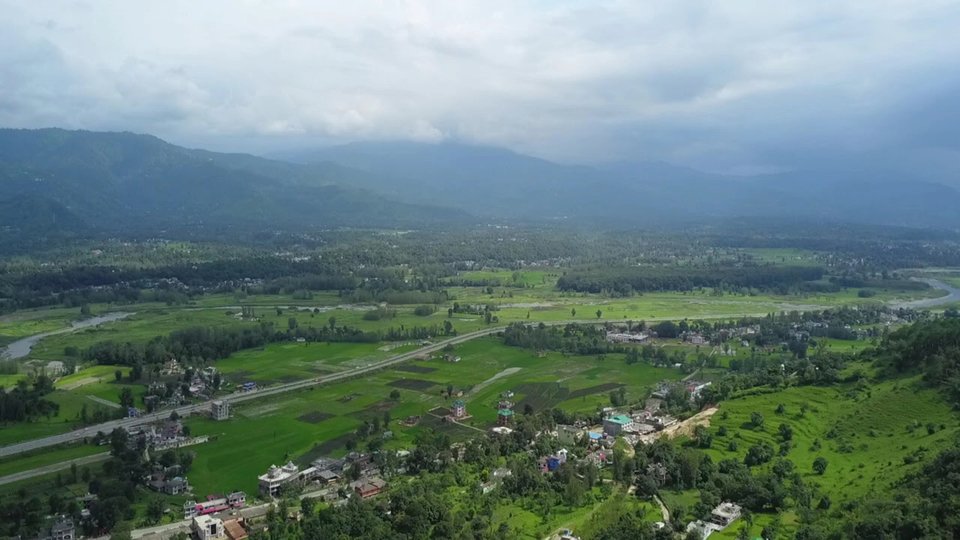
20. Rani Amrit Kaur Park
Rani Amrit Kaur Park, situated on the Tarna Hills approximately 5 km from Mandi, is a notable tourist destination. Inaugurated by the Dalai Lama in 1957, the park is adjacent to a 15th-century temple dedicated to Tarna Devi, a Hindu goddess. The park’s namesake, Rani Amrit Kaur, was the wife of the Raja of Mandi, who departed for Paris in 1933 and passed away in London in 1948. She was a cousin of India’s first female cabinet minister, also named Amrit Kaur. A biography detailing her life was published in 2023.
Visit Time: 9 am to 5 pm
21. Sunken Garden
The Sunken Garden in Mandi, is a captivating and historically significant attraction. Legend has it that Raja Sidh Sen of Mandi slew his son-in-law, Raja Prithi of Bhangal, and buried him at this site. Originally a lake, the garden was transformed into a park by Raja Joginder Sen. Featuring a clock tower, the garden serves as a focal point for various activities in the city.

Visit Time: 10 AM to 7:45 PM
22.Siddha Ganapati Temple
Siddha Ganapati Temple, a renowned shrine dedicated to Lord Ganesha, the deity of wisdom and success, is situated in Mandi, Constructed by Raja Siddhi Sen, a former ruler of Mandi and a devoted follower of Ganesha, the temple is a site where he practiced tantric meditation. Located near the Regional Hospital on National Highway 70, the temple hosts the festival of Ganesh Chaturthi annually in August or September. During this ten-day celebration, thousands of devotees gather to worship Ganesha, culminating in the immersion of his idol in the Beas River, known as Ganpati Visarjan, symbolizing his return home. Siddha Ganapati Temple contributes to Mandi’s reputation as a pilgrimage and tourist destination, earning it the monikers “Varanasi of Himachal” or “Kashi of the Hills” due to its 81 ancient stone temples and riverside location.
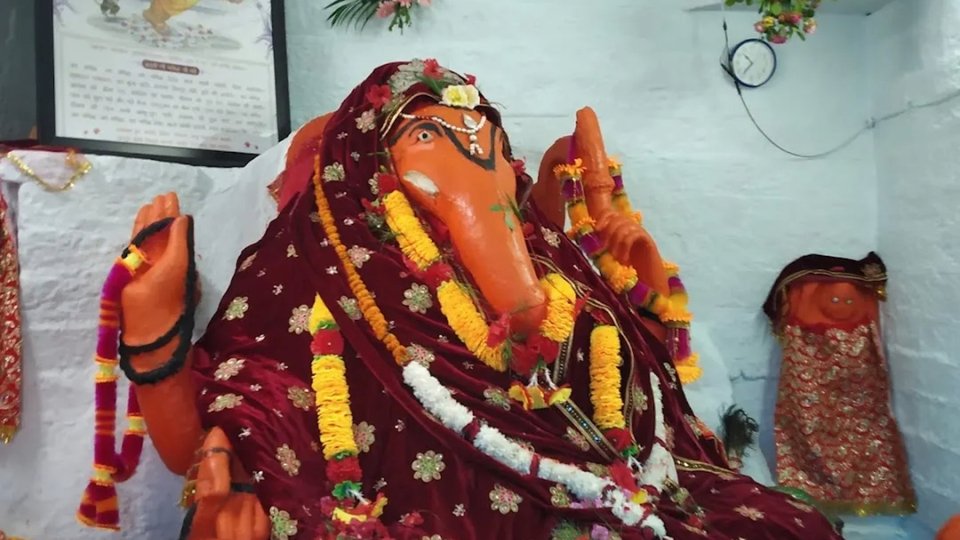
Visit Time:
- Wednesday to Monday: The temple is open from 4:30 AM to 9:30 PM, with various aartis and darshans held throughout the day.
- Tuesday: The temple opens from 3:15 AM to 11:30 PM, featuring special poojas and aartis.
- Vinayaki Chaturthi: The temple operates from 6:00 AM to 9:50 PM, with a special abhishekha and pooja conducted from 7:30 AM to 1:00 PM.
- Sankashti Chaturthi: The temple is open from 4:30 AM to 11:45 PM, with a special pooja and abhishekha performed 90 minutes before moonrise.
23. Ardhnareshwar Temple
The Ardhnareshwar Temple in Mandi, is dedicated to Lord Shiva and Goddess Parvati, featuring a unique stone image of Ardhnarishwar—a deity embodying both male and female aspects. The right half represents Shiva, and the left half, Parvati, with carvings of their respective vehicles, the bull and the lion, alongside other deities like Hanuman and Bhairon. This sacred temple is highly revered by devotees and is protected by the Archaeological Survey of India. Its architecture, including a cella, porch, and mandap, is of exceptional quality. Despite being located in a bustling area, the temple’s ambiance evokes an ancient aura.
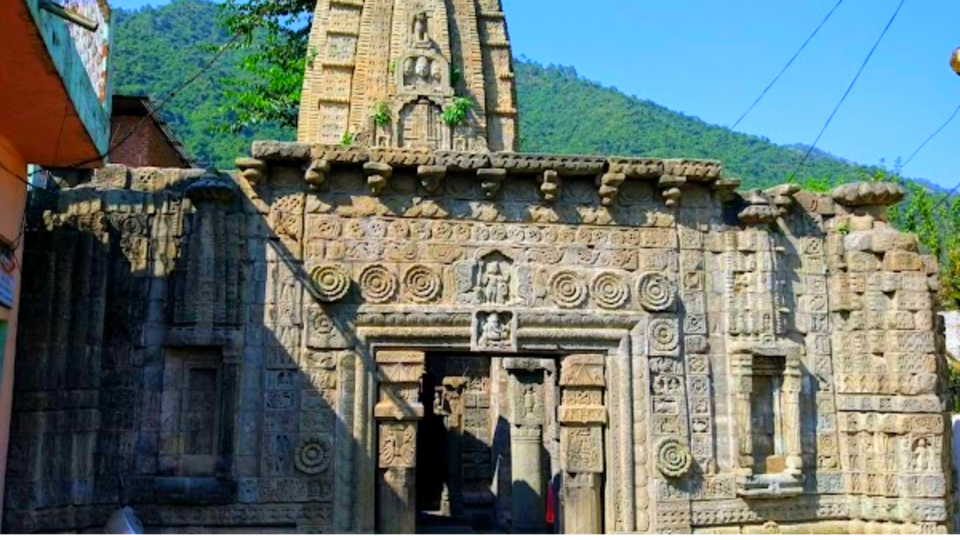
Visit Time: 6 am to 8 pm
24. Chauntra Valley
Chauntra Valley, located in Mandi district is a picturesque valley known for its natural beauty and tranquil surroundings. The valley is dotted with lush greenery, meandering streams, and stunning vistas of the surrounding mountains. It is a popular destination for nature lovers, photographers, and adventure enthusiasts. Chauntra Valley offers opportunities for trekking, camping, and exploring the unspoiled beauty of the Himalayas. The optimal time to explore Chauntra Valley hinges on your interests and plans. Typically, the months of March to May, during the spring season, offer delightful weather for sightseeing, paragliding, and outdoor adventures. The winter months, spanning from December to March, provide a chance to witness snowfall and engage in trekking, although adequate warm clothing is essential, and road closures may occur. It’s advisable to avoid the monsoon season, from June to September, due to the risk of landslides and potential disruptions to your travel itinerary.
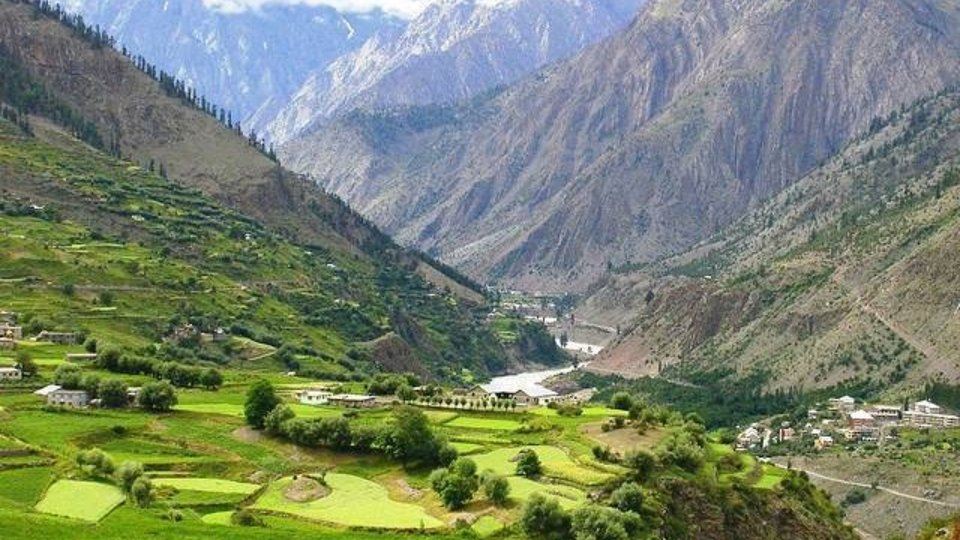
These were some places to visit in Mandi. Hope you liked it. Have a save journey!
How To Reach Delhi To Mandi
- By Road: The most common way to reach Mandi from Delhi is by road. The distance is approximately 400 kilometers, and the journey takes around 10-12 hours, depending on traffic and road conditions. You can either drive yourself or take a bus. Several private and state-run buses operate between Delhi and Mandi.
- Book A Cab: you can book a cab from our website along with a customized itinerary, or can hire just a cab for your next trip. So just do hurry. Call Us On: +911223577273
- By Train: There is no direct train from Delhi to Mandi. However, you can take a train from Delhi to Chandigarh or Pathankot and then continue your journey to Mandi by road. The nearest railway station to Mandi is Joginder Nagar, which is connected to Pathankot.
Here Are Some Trains From Delhi To Pathankot Railway Station
| Train Name | Train Number | Departure Time | Arrival Time | Travel Time | Fare (SL) |
|---|---|---|---|---|---|
| DURG UHP SPL | 08215 | 07:30 AM | 03:25 PM | 07:55H | ₹ 315 |
| FESTIVAL AC SPL | 04401 | 11:50 PM | 07:23 AM | 07:33H | ₹ 495 |
| JAT FESTIVL SPL | 02421 | 10:30 PM | 06:05 AM | 07:35H | ₹ 315 |
| FESTIVAL SF SPL | 04131 | 12:05 AM | 09:15 AM | 09:10H | ₹ 315 |
| NDLS JAT SPL | 02425 | 09:10 PM | 03:38 AM | 06:28H | ₹ 315 |
| JBP SVDK SPECIAL | 01449 | 09:10 PM | 06:00 AM | 08:50H | ₹ 315 |
| KOTA UHP SPECIAL | 09805 | 11:20 PM | 08:20 AM | 09:00H | ₹ 315 |
| KOTA SVDK SPL | 09803 | 11:30 PM | 09:15 AM | 09:45H | ₹ 315 |
| JAMMU RAJDHANI | 12425 | 08:40 PM | 03:08 AM | 06:28H | ₹ 495 |
| UTTAR S KRANTI | 12445 | 08:50 PM | 04:00 AM | 07:10H | ₹ 315 |
- By Air: The nearest airport to Mandi is in Bhuntar, which is approximately 50 kilometers away. You can take a flight from Delhi to Bhuntar and then continue your journey to Mandi by road.
Nearby Places To Visit At Mandi
| City | Distance from Mandi | Places to visit |
|---|---|---|
| Rewalsar | 25 km | Rewalsar Lake, Naina Devi Temple, Padmasambhava Cave |
| Sunder Nagar | 26 km | Mahamaya Temple, Sukhdev Vatika, Sunder Nagar Lake |
| Kullu | 76 km | Raghunath Temple, Bijli Mahadev, Great Himalayan National Park |
| Manali | 108 km | Hadimba Temple, Solang Valley, Rohtang Pass |
| Dharamshala | 125 km | Dalai Lama Temple, Bhagsu Waterfall, Kangra Fort |
Best Time To Visit Mandi
The best time to visit Mandi is during the months of March to June and September to November.
- March to June: These months constitute the summer season in Mandi. The weather is pleasant, with temperatures ranging from 15°C to 30°C, making it ideal for exploring the town and indulging in outdoor activities like trekking and sightseeing.
- September to November: This period marks the post-monsoon and early winter season. The weather is cool and comfortable, with temperatures ranging from 10°C to 25°C. This is a great time for nature lovers to witness the lush greenery and enjoy the scenic beauty of Mandi.
Avoid visiting Mandi during the monsoon season (July to August) as the region receives heavy rainfall, which can lead to landslides and roadblocks, making travel difficult.



